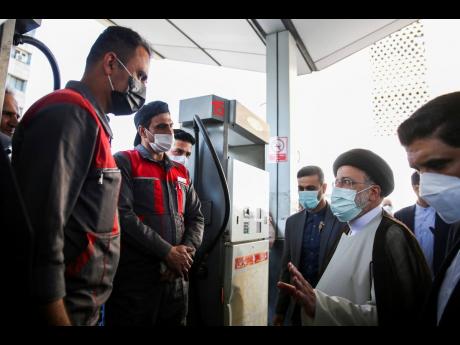Iran’s president says cyberattack meant to create disorder
DUBAI (AP):
Iran’s president said Wednesday that a cyberattack which paralysed every gas station in the Islamic Republic was designed to get “people angry by creating disorder and disruption”, as long lines still snaked around the pumps a day after the incident began.
Ebrahim Raisi’s remarks stopped short of assigning blame for the attack, which rendered useless the government-issued electronic cards that many Iranians use to buy subsidised fuel at the pump.
However, they suggested that he and others in the theocracy believe anti-Iranian forces carried out an assault likely designed to inflame the country as the second anniversary of a deadly crackdown on nationwide protests over gasoline prices approaches.
“There should be serious readiness in the field of cyberwar and related bodies should not allow the enemy to follow their ominous aims to make problem in trend of people’s life,” Raisi said. State television later aired footage of the president visiting a gas station in central Tehran.
The attack Tuesday also bore similarities to another, months earlier, that seemed to directly challenge Iran’s Supreme Leader Ayatollah Ali Khamenei as the country’s economy buckles under American sanctions.
On Wednesday morning, the state-run IRNA news agency quoted another official who claimed 80 per cent of Iran’s gas stations had begun selling fuel again. Associated Press journalists saw long lines at multiple gas stations in Tehran. One station had a line of 90 cars waiting for fuel. Those buying ended up having to pay at higher, unsubsidised prices.
The semi-official ISNA news agency, which first called the incident a cyberattack, said it saw those trying to buy fuel with a government-issued card through the machines instead receiving a message reading “cyberattack 64411”.
While ISNA didn’t acknowledge the number’s significance, that number is associated with a hotline run through Khamenei’s office that handles questions about Islamic law. ISNA later removed its reports, claiming that it too had been hacked. Such claims of hacking can come quickly when Iranian outlets publish news that angers the theocracy.
Farsi-language satellite channels abroad published videos apparently shot by drivers in Isfahan, a major Iranian city, showing electronic billboards there reading: “Khamenei! Where is our gas?” Another said: “Free gas in Jamaran gas station,” a reference to the home of the late Supreme Leader Ayatollah Ruhollah Khomeini.
The use of the number ‘64411’ mirrored the attack in July targeting Iran’s railroad system that also saw the number displayed. Israeli cybersecurity firm, Check Point, later attributed the train attack to a group of hackers that called themselves Indra, after the Hindu god of war.

